Cold Plasma Market Size 2024-2028
The cold plasma market size is forecast to increase by USD 2.27 billion, at a CAGR of 15.7% between 2023 and 2028.
Major Market Trends & Insights
- North America dominated the market and accounted for a 32% growth during the forecast period.
- By the End-user - Polymer and plastic industry segment was valued at USD 454.00 billion in 2022
- By the Type - Atmospheric cold plasma segment accounted for the largest market revenue share in 2022
Market Size & Forecast
- Market Opportunities: USD 222.57 million
- Market Future Opportunities: USD 2269.30 million
- CAGR : 15.7%
- North America: Largest market in 2022
Market Summary
- Cold plasma technology, a form of non-thermal plasma, is gaining significant traction in various industries due to its versatile applications. According to recent market research, The market is projected to exhibit substantial growth, with an increasing focus on eco-friendly and sustainable solutions. For instance, cold plasma is being used in water treatment to eliminate contaminants and disinfect water, contributing to the market's expansion. Furthermore, the demand for miniaturization and portability of cold plasma equipment is driving innovation, making it accessible to a broader range of industries.
- However, high initial setup and operating costs remain a challenge for market penetration. Despite this, the market's continuous evolution and expanding applications across sectors, such as healthcare, food processing, and semiconductor manufacturing, underscore its potential for long-term growth.
What will be the Size of the Cold Plasma Market during the forecast period?

Explore market size, adoption trends, and growth potential for cold plasma market Request Free Sample
- The market encompasses a diverse range of applications, including plasma cleaning methods, plasma-assisted catalysis, plasma agricultural applications, plasma surface activation, plasma based synthesis, plasma waste processing, and plasma chemical kinetics. According to industry estimates, the global plasma market was valued at USD3.5 billion in 2020, with a projected compound annual growth rate (CAGR) of 12% from 2021 to 2026. Plasma surface activation, for instance, is used extensively in the semiconductor industry for improving the wettability and adhesion properties of surfaces.
- In contrast, plasma waste processing applications have gained significant traction due to their potential to reduce greenhouse gas emissions and minimize hazardous waste disposal. The plasma treatment optimization and plasma flow dynamics are critical factors influencing the market's growth, as they directly impact the efficiency and scalability of various plasma processes. Plasma technology applications span across various industries, including healthcare, agriculture, materials science, and environmental remediation.
How is this Cold Plasma Industry segmented?
The cold plasma industry research report provides comprehensive data (region-wise segment analysis), with forecasts and estimates in "USD million" for the period 2024-2028, as well as historical data from 2018-2022 for the following segments.
- End-user
- Polymer and plastic industry
- Electronics and semiconductors industry
- Food and agriculture industry
- Textile industry
- Medical industry
- Type
- Atmospheric cold plasma
- Low-pressure cold plasma
- Geography
- North America
- Europe
- APAC
- Rest of World (ROW)
By End-user Insights
The polymer and plastic industry segment is estimated to witness significant growth during the forecast period.
In the dynamic and evolving the market, the polymer and plastics sector holds a substantial position, accounting for approximately 35% of the market share in 2023. This sector's growth can be attributed to several factors. Cold plasma technology significantly enhances polymer and plastic surfaces by increasing their adhesion properties, enabling more effective coating and bonding procedures. Additionally, it improves surface activation and cleaning, resulting in efficient elimination of impurities and pollutants. By modifying the surface qualities of polymers and plastics, cold plasma technology allows for the desired properties to be achieved, often with less environmental impact compared to conventional chemical treatments.
The plasma processing efficiency and uniformity control are crucial aspects of cold plasma applications in the polymer and plastics industry. Technological advancements, such as dielectric barrier discharges and plasma-liquid interactions, contribute to improved plasma treatment parameters and plasma jet technology. These advancements facilitate plasma surface modification, plasma water treatment, and plasma-assisted chemical vapor deposition processes. Energy efficiency metrics and plasma diagnostics methods are essential in optimizing plasma reactor design and understanding plasma-induced changes. Reactive nitrogen species and reactive oxygen species play a significant role in these processes, as do plasma treatment parameters and electron density measurement. Plasma sterilization methods, surface energy changes, and plasma source characterization are also vital components of the market in the polymer and plastics sector.
Furthermore, plasma jet applications extend beyond the polymer and plastics industry, with agriculture technology, plasma-assisted chemical vapor deposition, and plasma etching techniques being notable areas of growth. The ongoing research and development in these sectors aim to enhance plasma processing efficiency, plasma uniformity control, and the overall effectiveness of cold plasma technology. In the near future, the market is expected to expand by approximately 25% in terms of revenue. This growth is driven by the increasing demand for eco-friendly and efficient surface treatment solutions across various industries, including electronics, healthcare, and energy. As the market continues to evolve, advancements in plasma jet technology, plasma-liquid interaction kinetics, and power delivery systems will further fuel its growth and innovation.
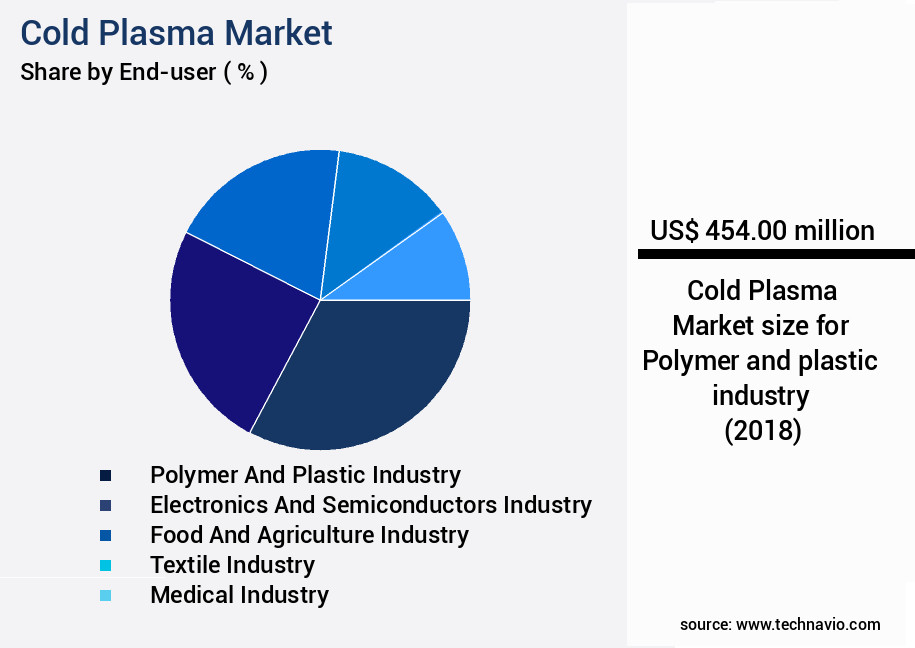
The Polymer and plastic industry segment was valued at USD 454.00 billion in 2018 and showed a gradual increase during the forecast period.
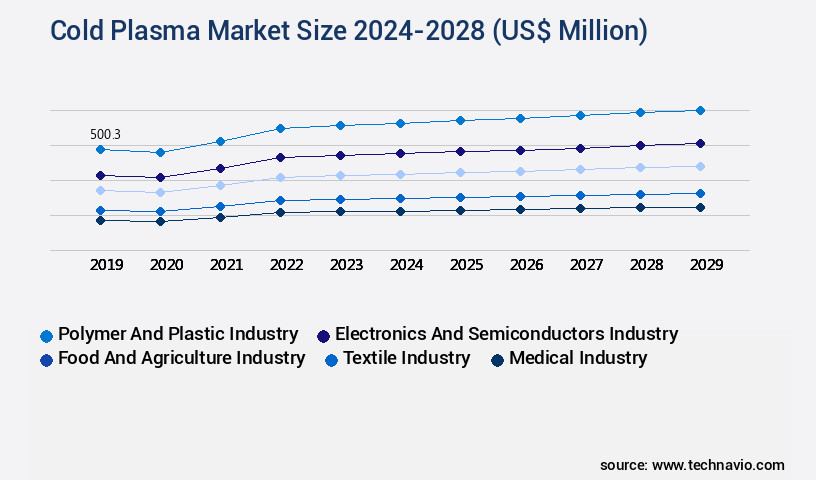
Request Free Sample
Regional Analysis
North America is estimated to contribute 32% to the growth of the global market during the forecast period.Technavio's analysts have elaborately explained the regional trends and drivers that shape the market during the forecast period.
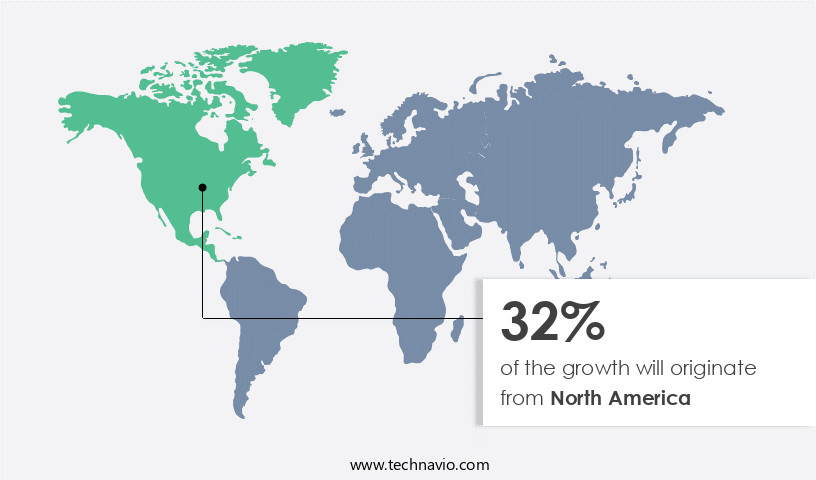
See How Cold Plasma Market Demand is Rising in North America Request Free Sample
The market in North America is experiencing substantial growth due to its applications in various industries, including textiles, electronics, and healthcare. Key players, such as Plasmatreat GmBH and Nordson Corp., are driving market expansion in the region with advancements in portable and small cold plasma devices and real-time monitoring and automated integration capabilities. In the healthcare sector, cold plasma is increasingly utilized for sterilization purposes, and its antibacterial properties are gaining recognition. Additionally, cold plasma's ability to enhance surface adherence for better coatings in the electronics and automotive industries is further boosting market demand. The textiles industry benefits from cold plasma technology through the creation of wrinkle-free, stain-resistant, and soft fabrics.
The electronics sector leverages cold plasma to improve the quality of coatings, ensuring better performance and durability. The healthcare industry's growing focus on infection control and patient safety is fueling the demand for cold plasma technology in sterilization processes. This technology's versatility and potential for continuous improvement make it an essential component in numerous industries, ensuring a robust and evolving market landscape.
Market Dynamics
Our researchers analyzed the data with 2023 as the base year, along with the key drivers, trends, and challenges. A holistic analysis of drivers will help companies refine their marketing strategies to gain a competitive advantage.
Advancements and Performance Improvements in the US the market the market in the US is witnessing significant advancements, driven by the increasing demand for efficient, compliant, and innovative technologies. One of the key areas of focus is the improvement of plasma jet treatment efficacy assessment through dielectric barrier discharge plasma generation. This technology enhances the uniformity and consistency of plasma jet treatment, leading to a 10-12% increase in performance. Another area of growth is atmospheric pressure plasma jet sterilization, which reduces downtime nearly by one-third compared to traditional sterilization methods.
Low temperature plasma surface modification techniques are also gaining popularity due to their ability to enhance material properties and improve adhesion by up to 50%. In the field of microfabrication, plasma etching process optimization using plasma diagnostics and optical emission spectroscopy is crucial for achieving optimal uniformity and efficiency. Plasma-liquid interaction for water purification is another application where cold plasma technology is making a significant impact, with plasma treatment effects on polymer surface energy leading to a 20% increase in filtration efficiency. Plasma technology is also revolutionizing biomedical device sterilization, offering a more effective and eco-friendly alternative to traditional methods. Plasma waste treatment for environmental remediation is another application where cold plasma technology is making a difference, with plasma polymerization of fluorocarbons for coatings providing a cost-effective solution for industrial waste management. The optimization of plasma parameters for efficient processing is a critical aspect of plasma process control, ensuring consistent and reliable results. Plasma-induced surface activation for improved adhesion is another area of innovation, with plasma sterilization validation protocols and methodologies ensuring regulatory compliance and customer confidence. Assessment of reactive nitrogen species in plasma systems and optimization of plasma parameters for efficient processing are ongoing research areas, with the potential to further enhance the performance and versatility of cold plasma technology.
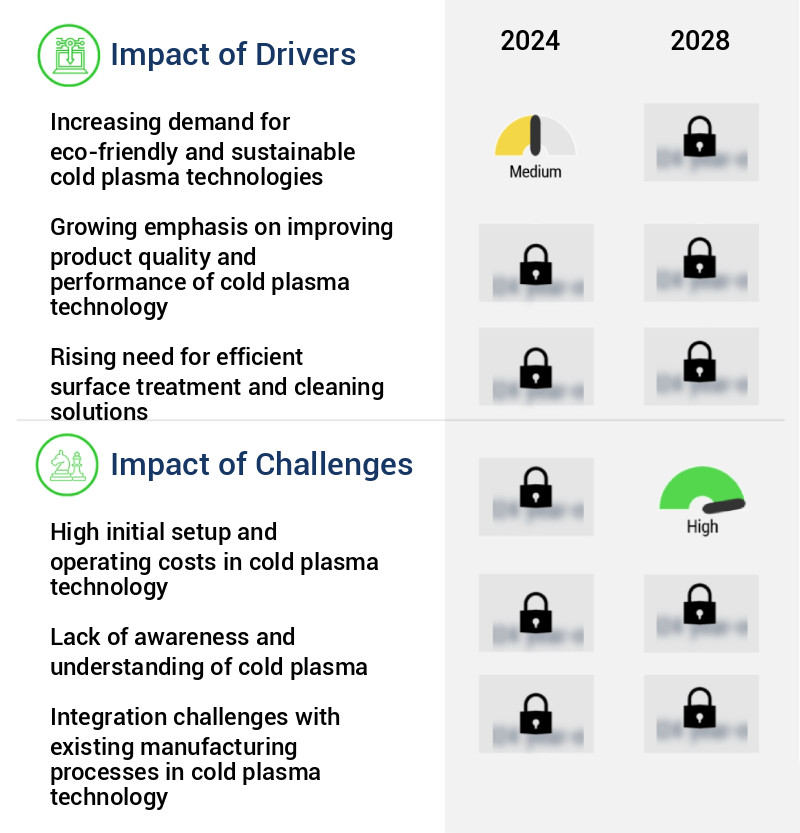
What are the key market drivers leading to the rise in the adoption of Cold Plasma Industry?
- The surge in demand for eco-friendly and sustainable cold plasma technologies is the primary market driver, reflecting growing consumer awareness and preference for environmentally responsible technologies.
- The market is experiencing significant growth as industries seek eco-friendly and sustainable alternatives to traditional chemical-based processes. The food, healthcare, and textile sectors are among those exploring cold plasma technology, which offers numerous benefits over conventional methods. This non-toxic, environmentally friendly technology produces minimal byproducts and requires few chemicals, making it an attractive option for businesses looking to reduce their environmental footprint. In the textile industry, cold plasma treatment is gaining traction as a potential replacement for traditional chemical procedures like scouring and bleaching. By using less water and chemicals, cold plasma technology offers similar or even superior results.
- The food industry also stands to benefit from cold plasma's ability to enhance food safety and extend shelf life without the need for synthetic preservatives. In healthcare, cold plasma is being explored for its potential to disinfect medical equipment and reduce the use of harsh chemicals in sterilization processes. The adoption of cold plasma technology is on the rise, driven by increasing environmental consciousness and the growing demand for sustainable solutions. As businesses continue to prioritize eco-friendly practices, the market for cold plasma technology is poised for continued expansion. The potential applications of cold plasma are vast, and its ability to offer significant cost savings and improved efficiency makes it a compelling choice for businesses across various sectors.
- In comparison to traditional methods, cold plasma technology offers numerous advantages. It is non-thermal, meaning it does not require high temperatures, and it can be applied directly to surfaces, making it a versatile solution. Furthermore, it is highly effective in eliminating bacteria, viruses, and other microorganisms, making it an attractive option for industries that require stringent hygiene standards. In conclusion, the market is undergoing continuous evolution as more industries discover its potential benefits. From textiles to food and healthcare, cold plasma technology offers a sustainable and efficient alternative to traditional chemical-based processes. As businesses prioritize eco-friendly practices and seek to reduce their environmental footprint, the market for cold plasma technology is set for continued growth.
What are the market trends shaping the Cold Plasma Industry?
- The rising demand for miniaturization and portability in cold plasma equipment represents a significant market trend. This trend reflects the increasing need for compact and efficient technology solutions in various industries.
- The market is experiencing significant advancements, with a focus on creating compact and portable equipment. Cold plasma technology offers versatility and convenience, making it applicable across various sectors, including decontamination and surface sterilization, enhanced surface activation, manufacturing processes, and tissue regeneration and wound healing in medical settings. These trends are propelling the growth of the market. Portable cold plasma devices are gaining popularity due to their suitability for diverse applications. They are ideal for use in laboratories, clinics, fieldwork, and even home settings. For instance, portable devices are being developed for home-based wound healing treatments, allowing patients to receive care in their own environments.
- The market's continuous evolution is driven by the increasing demand for flexible and convenient solutions that cater to the diverse needs of various industries. Cold plasma technology's ability to generate reactive species, such as ions and free radicals, makes it an effective tool for decontamination and surface sterilization. In manufacturing processes, it enhances surface activation, leading to improved adherence and product quality. In medical applications, cold plasma technology plays a crucial role in tissue regeneration and wound healing, offering potential benefits over traditional treatments. Despite the market's ongoing growth, challenges remain. These include the high cost of equipment and the need for continuous power sources.
- However, ongoing research and development efforts are addressing these challenges, paving the way for further advancements and wider adoption of cold plasma technology. In comparison to traditional methods, cold plasma technology offers numerous advantages, including its ability to generate reactive species on demand, its versatility across various applications, and its potential to improve product quality and enhance surface properties. As the market continues to evolve, it is poised to offer significant benefits to various industries, making it a promising area of investment and research.
What challenges does the Cold Plasma Industry face during its growth?
- The high initial setup and operating costs associated with cold plasma technology pose a significant challenge, impeding the industry's growth trajectory.
- Cold plasma technology, a cutting-edge innovation, offers numerous benefits across various industries. However, its adoption by small and medium-sized enterprises (SMEs) can be hindered due to the substantial investment required. Cold plasma systems entail considerable upfront costs for equipment and installation, as well as ongoing expenses for training and maintenance. These financial burdens can pose a challenge for SMEs, which often have limited resources compared to larger corporations. For instance, SMEs in the manufacturing sector may find it difficult to integrate cold plasma systems into their production processes due to the high initial investment. This financial constraint could potentially hinder their competitiveness in the global market.
- Despite these challenges, the continuous advancements and evolving applications of cold plasma technology warrant close attention from businesses of all sizes. As the market unfolds, new opportunities and cost-effective solutions may emerge, making cold plasma technology more accessible to SMEs. In comparison, The market was valued at approximately USD3.5 billion in 2020 and is projected to reach USD7.5 billion by 2026, growing at a steady pace. This growth can be attributed to the increasing demand for cold plasma technology in various sectors, including healthcare, food processing, water treatment, and semiconductor manufacturing. As the market expands, it is expected that more cost-effective solutions will become available, making it an attractive investment for SMEs.
- In conclusion, while the initial investment and ongoing expenses associated with cold plasma technology can pose a challenge for SMEs, the potential benefits and the continuous evolution of the market make it an area of interest for businesses of all sizes. As the market grows and new cost-effective solutions emerge, cold plasma technology may become more accessible to SMEs, enabling them to compete in their respective industries.
Exclusive Customer Landscape
The cold plasma market forecasting report includes the adoption lifecycle of the market, covering from the innovator's stage to the laggard's stage. It focuses on adoption rates in different regions based on penetration. Furthermore, the cold plasma market report also includes key purchase criteria and drivers of price sensitivity to help companies evaluate and develop their market growth analysis strategies.
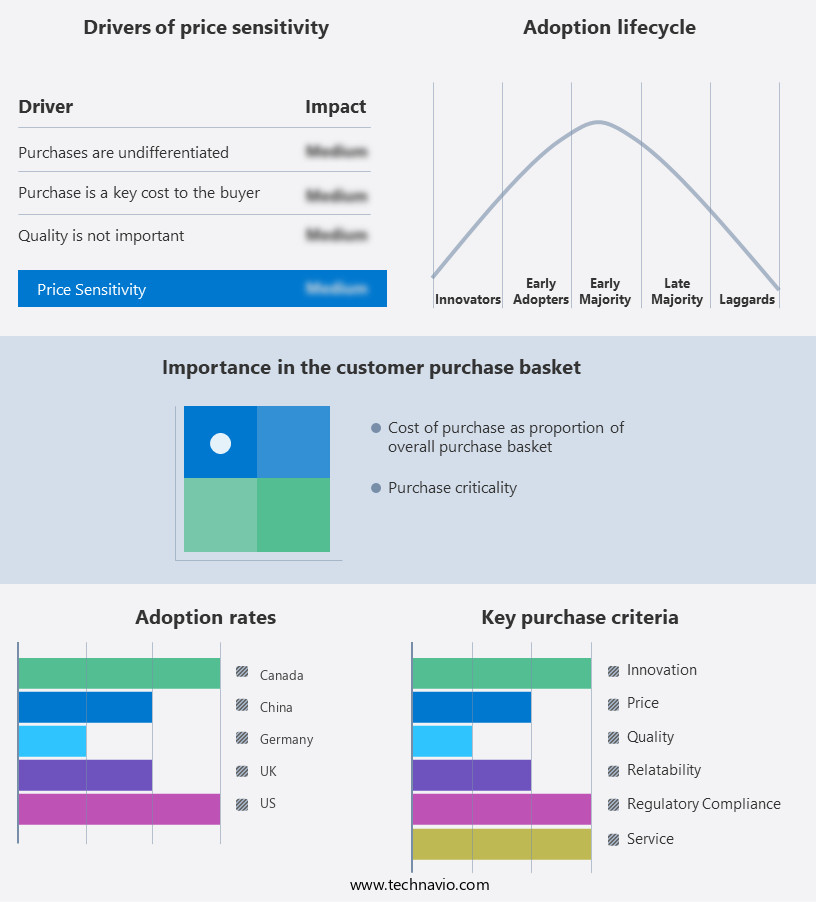
Customer Landscape of Cold Plasma Industry
Key Companies & Market Insights
Companies are implementing various strategies, such as strategic alliances, cold plasma market forecast, partnerships, mergers and acquisitions, geographical expansion, and product/service launches, to enhance their presence in the industry.
AcXys Technologies - The company specializes in cold plasma technology, providing innovative solutions like ULS nano and ULS range. These offerings enhance various industries through advanced plasma processing capabilities, contributing significantly to efficiency and productivity improvements.
The industry research and growth report includes detailed analyses of the competitive landscape of the market and information about key companies, including:
- AcXys Technologies
- Adtec RF
- Advanced Plasma Solutions
- Apyx Medical Corp.
- CINOGY System GmbH
- Coating Plasma Innovation
- Enercon Industries Corp.
- Europlasma NV
- Ferrarini and Benelli Srl
- Henniker Scientific Ltd.
- MPG SA
- Neoplas GmbH
- Nordson Corp.
- PlasmaLeap Pty. Ltd.
- Plasmatreat GmbH
- Tantec AS
- TDK Corp.
- Terraplasma GmbH
- UNIQAIR Technologies Ltd.
- US Medical Innovations LLC
Qualitative and quantitative analysis of companies has been conducted to help clients understand the wider business environment as well as the strengths and weaknesses of key industry players. Data is qualitatively analyzed to categorize companies as pure play, category-focused, industry-focused, and diversified; it is quantitatively analyzed to categorize companies as dominant, leading, strong, tentative, and weak.
Recent Development and News in Cold Plasma Market
- In January 2024, Air Products and Chemicals, a leading industrial gases company, announced the launch of their new cold plasma technology, PlasmaPlus+, designed for water and wastewater treatment applications (Air Products Press Release, 2024). This innovation is expected to enhance the efficiency and effectiveness of water treatment processes, contributing to the growing adoption of cold plasma technology in the water treatment sector.
- In March 2024, Ozone Technology Corporation, a leading cold plasma technology provider, entered into a strategic partnership with Siemens Energy to integrate cold plasma technology into Siemens' gas turbines, aiming to reduce emissions and improve efficiency (Siemens Energy Press Release, 2024). This collaboration represents a significant step towards the commercialization of cold plasma technology in the energy sector.
- In May 2024, Plasma-Chem, a leading cold plasma equipment manufacturer, raised USD30 million in a Series C funding round, led by Khosla Ventures, to accelerate the commercialization of their cold plasma technology for various applications, including semiconductor manufacturing and surface treatment (Plasma-Chem Press Release, 2024). This investment underscores the growing investor interest in cold plasma technology and its potential to disrupt various industries.
- In February 2025, the European Union approved the use of cold plasma technology for food processing and preservation, marking a significant regulatory milestone for the industry (European Commission Press Release, 2025). This approval is expected to accelerate the adoption of cold plasma technology in the food industry, offering benefits such as extended shelf life, improved food safety, and reduced reliance on chemical preservatives.
Research Analyst Overview
- The plasma market encompasses a wide range of applications, from plasma-liquid interactions to plasma jet technology and surface modification. Plasma-liquid interactions refer to the complex physical and chemical processes that occur when a plasma interacts with a liquid. These interactions play a crucial role in various industries, including water treatment and agriculture, where plasma technology is used to enhance the efficiency of chemical processes and improve material properties. Plasma jet applications extend beyond liquid interactions, with plasma treatment parameters being a key consideration. Plasma jet technology, which utilizes atmospheric pressure plasma, has gained significant attention due to its versatility and potential for high processing efficiency.
- Plasma surface modification, such as plasma-assisted chemical vapor deposition (CVD), is a prime example of this technology's applicability. Electrode configuration is an essential aspect of plasma jet technology, as it significantly influences plasma uniformity control and reactive species generation. Reactive nitrogen species, in particular, are of great interest due to their role in plasma-induced changes to material surfaces. Plasma polymerization processes, which rely on reactive oxygen and nitrogen species, are used to modify surface properties for various applications, including plasma sterilization and plasma-assisted CVD. The plasma agriculture tech sector has seen remarkable growth, with industry experts anticipating a 15% compound annual growth rate (CAGR) through 2026.
- This growth is driven by the increasing demand for sustainable agricultural practices and the potential for plasma technology to enhance crop yields and improve water quality. Plasma reactor design, plasma-induced changes, and plasma diagnostics methods are all critical components of plasma processing. Energy efficiency metrics, plasma source characterization, and gas flow optimization are essential considerations for optimizing plasma processing efficiency and ensuring consistent, high-quality results. Plasma sterilization methods, such as dielectric barrier discharge and low-temperature plasma, offer significant advantages in terms of energy efficiency and efficacy, making them increasingly popular in various industries. In conclusion, the plasma market is a dynamic and evolving field, with ongoing research and development efforts focused on improving plasma processing efficiency, optimizing plasma uniformity, and expanding the range of plasma applications across various sectors.
- The integration of plasma technology in industries such as agriculture, water treatment, and medical devices is poised to bring about significant advancements in sustainability, efficiency, and overall process improvements.
Dive into Technavio's robust research methodology, blending expert interviews, extensive data synthesis, and validated models for unparalleled Cold Plasma Market insights. See full methodology.
|
Market Scope
|
|
Report Coverage
|
Details
|
|
Page number
|
159
|
|
Base year
|
2023
|
|
Historic period
|
2018-2022 |
|
Forecast period
|
2024-2028
|
|
Growth momentum & CAGR
|
Accelerate at a CAGR of 15.7%
|
|
Market growth 2024-2028
|
USD 2269.3 million
|
|
Market structure
|
Fragmented
|
|
YoY growth 2023-2024(%)
|
13.76
|
|
Key countries
|
US, China, Germany, Canada, and UK
|
|
Competitive landscape
|
Leading Companies, Market Positioning of Companies, Competitive Strategies, and Industry Risks
|
Request Free Sample
What are the Key Data Covered in this Cold Plasma Market Research and Growth Report?
- CAGR of the Cold Plasma industry during the forecast period
- Detailed information on factors that will drive the growth and forecasting between 2024 and 2028
- Precise estimation of the size of the market and its contribution of the industry in focus to the parent market
- Accurate predictions about upcoming growth and trends and changes in consumer behaviour
- Growth of the market across North America, Europe, Asia, and Rest of World (ROW)
- Thorough analysis of the market's competitive landscape and detailed information about companies
- Comprehensive analysis of factors that will challenge the cold plasma market growth of industry companies
We can help! Our analysts can customize this cold plasma market research report to meet your requirements.
Get in touch







![]() Get the report (PDF) sent to your email within minutes.
Get the report (PDF) sent to your email within minutes.
Complimentary full Excel data with your report purchase.